
 |
Eager Space | Videos | All Video Text | Support | Community | About |
|---|

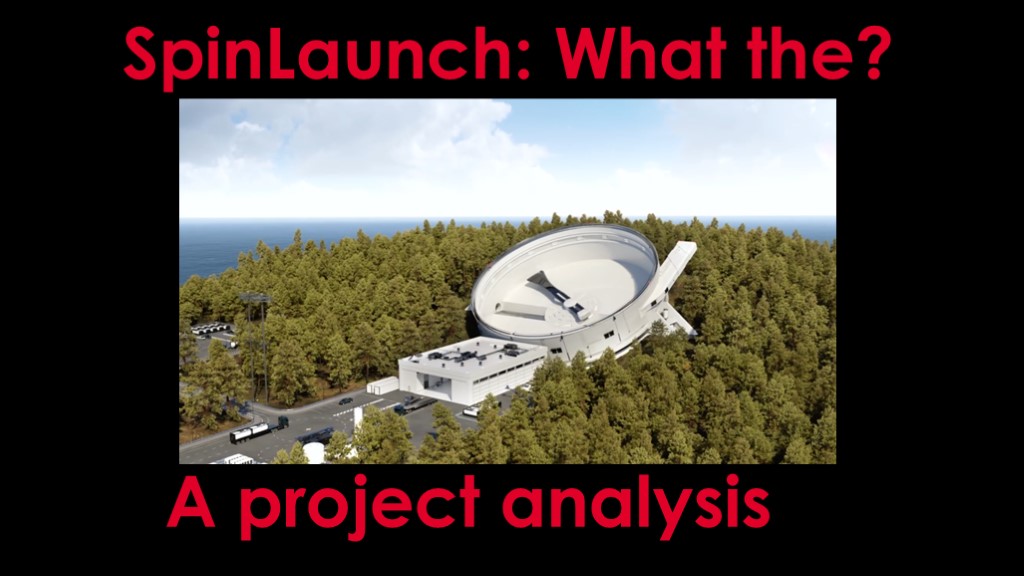
Attach that launch vehicle to a 100 meter centrifuge inside a vacuum chamber and spin it up to 450 RPM. That gives the vehicle a speed of 2800 meters/second and about 10,000 gs of centripetal acceleration.
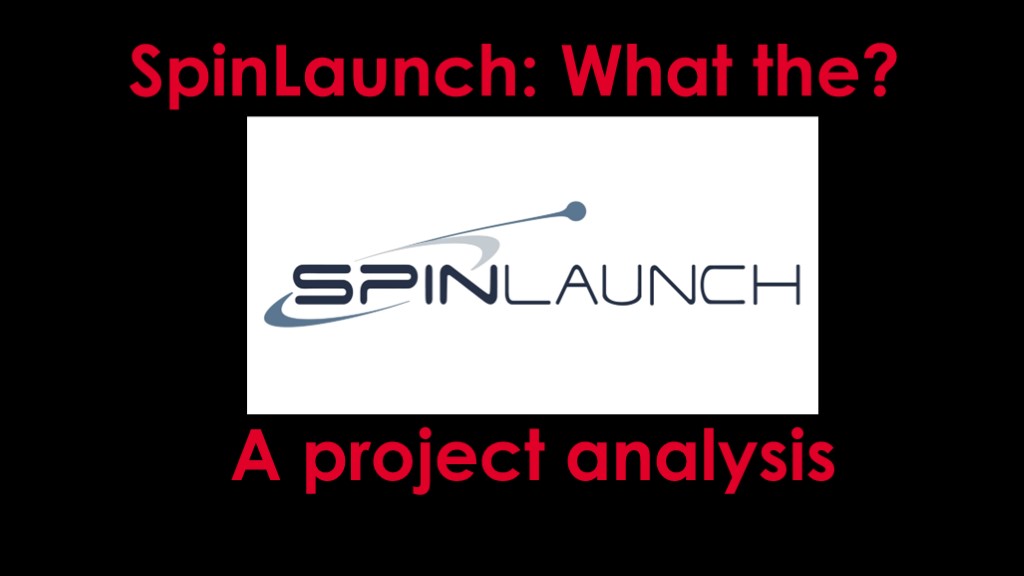
SpinLaunch is an interesting new idea on reducing the cost of access to space.
The open question is whether it makes sense as a project. This is not an easy thing to determine and SpinLaunch has not shared many technical details, but I've found enough information to do a project analysis and answer some of the questions I've seen about it.
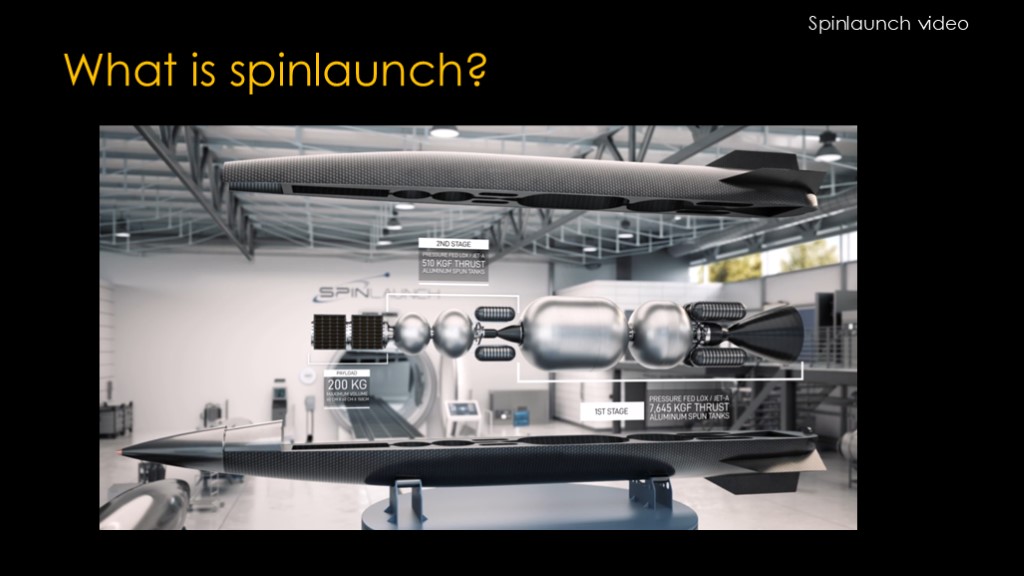
The simplest way to describe SpinLaunch is simply to go watch their video, which I'll link to in the corner.
The plan is to take a simple pressure-fed two-stage rocket, and encapsulate it inside this fairing.
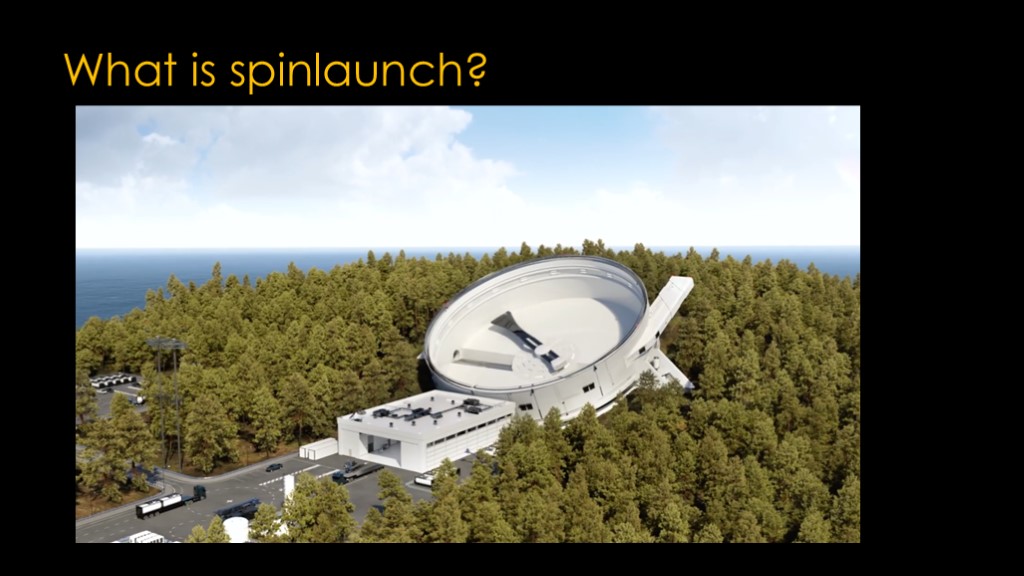
Attach that launch vehicle to a 100 meter centrifuge inside a vacuum chamber and spin it up to 450 RPM. That gives the vehicle a speed of 2800 meters/second and about 10,000 gs of centripetal acceleration.

Release it at the right moment so it exits the vacuum chamber and heads out of the atmosphere.
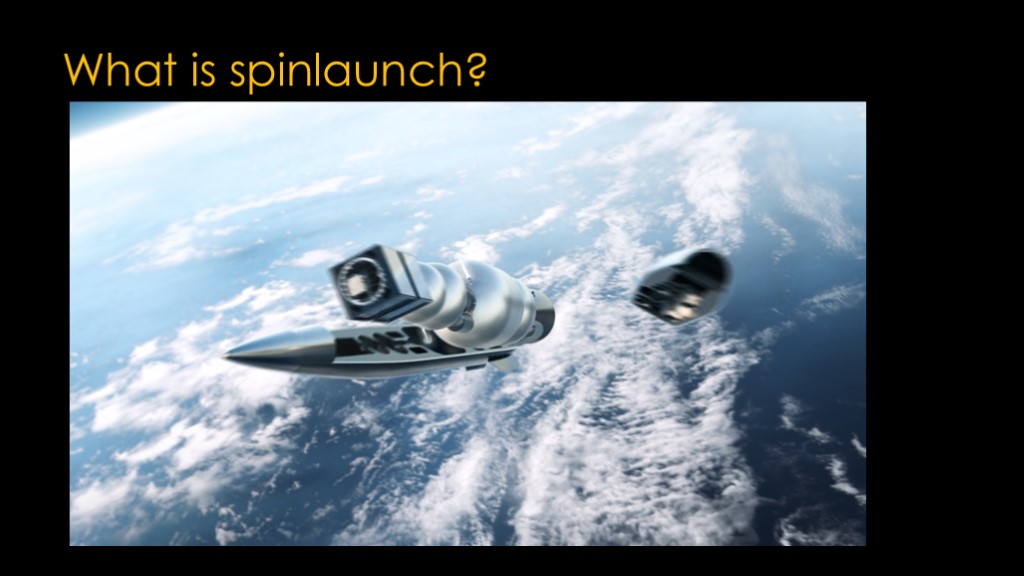
At the right point, pop off the fairing, ignite the first stage of the two-stage rocket, and head off to orbit like any other rocket.

My first questions is whether it's possible - does it require advanced technologies that we don't have?
The answer is yes, it's possible.

Is it practical?
There are a number of different factors that go into answering that question...
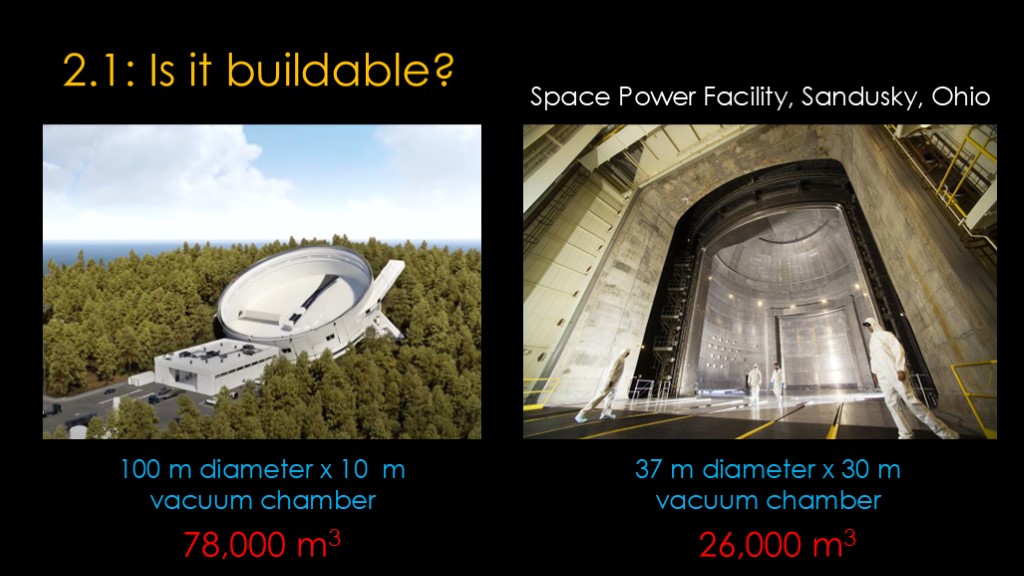
Is it buildable?
I'm going to start with the ground launcher, which I'm going to call the spinner for obvious reasons.
It needs a 100 meter diameter vacuum chamber that would have a volume of approximately 78,000 cubic meters.
NASA owns the largest vacuum chamber, and it has a volume of about 26,000 cubic meters. It was built about 50 years ago.
It's not clear how much it will cost, but it certainly seems buildable.

Inside the vacuum chamber, there is a long arm that will spin the payload around.
There are no exact analogies, but the wind power industry is building turbine blades that are over 100 meters in length, and fabricating the payload arm seems feasible.
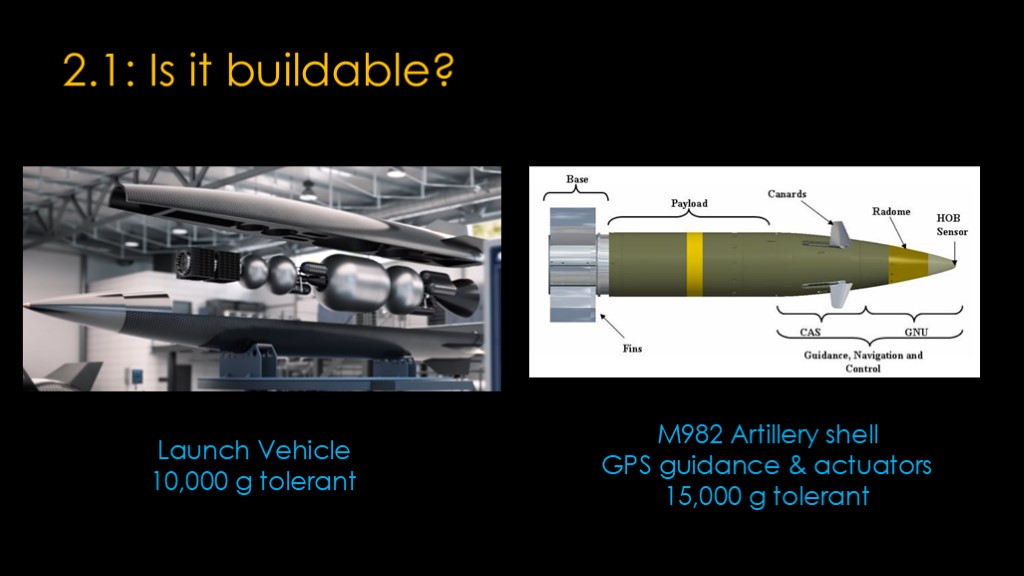
The launch vehicle is subjected to very high g loads when it is spun up and those g loads vanish when it is released.
This seems like a very hard problem, but there have been a number of artillery shells with electronics on board; the current variants contain full GPS systems and guidance actuators. They tolerate 15,000 gs when fired.
The launch vehicle will require new engineering to deal with those g loads, but it seems doable.
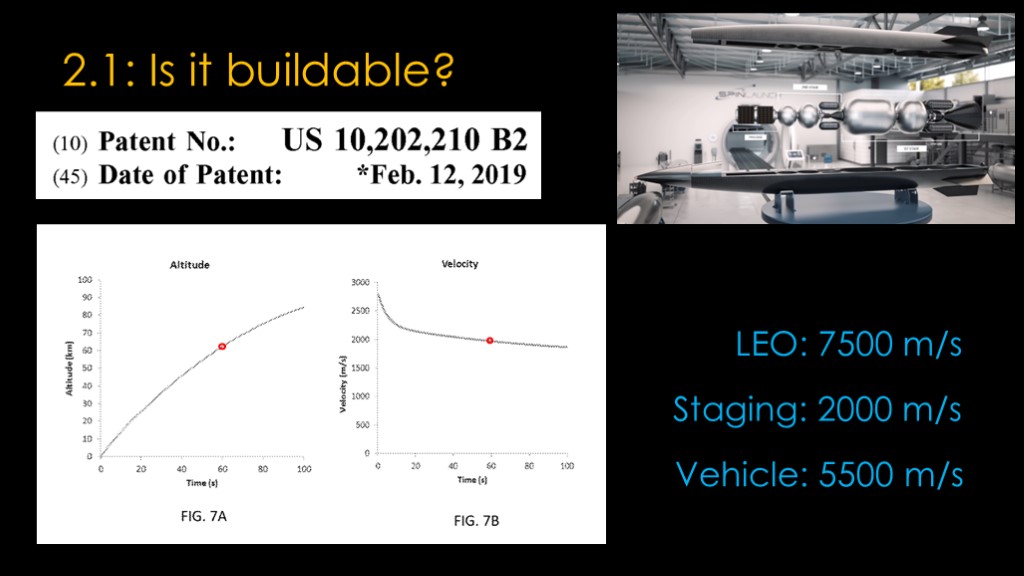
The spinner acts like the first stage of a conventional rocket, and do to an orbital analysis, we need to know what the spinner can do.
SpinLaunch has been issued a few patents, and one of them includes this altitude/velocity graph.
The patent claims their first engine burn will start at 60 seconds after launch, and reading from the graph, that would be at 62 km of altitude and travelling at around 2000 meters per second.
That's roughly in the same range as Falcon 9, which stages at around 70 km and 2200 meters per second.
Orbital velocity is about 7500 meters per second, and at staging the vehicle is travelling at about 2000 m/s, so - ignoring gravity losses - it needs about 5500 m/s of delta-v to get into orbit.

Can we get that 5500 m/s? We'll need some more information about the rocket.
They are using pressure fed engines, which are simple and robust; just pressurize the propellant and that pushes them into the combustion chamber. This makes sense as the tanks will already be heavy to deal with the g forces, and that means they don't need to develop high-g turbopumps.
They burn JET-A fuel rather than RP-1. That's a bit of a strange choice - RP-1 was created because Jet A contains a lot of sulfur and varies widely in composition, and that causes issues in rocket engines - but it may be that it doesn't matter much for a pressure fed engine with a very simple nozzle. It's certainly cheaper and easier to get.
Because JET-A will be close to RP-1, I'm going to assume they can get an ISP of about 310 out of their engines because they only operate in vacuum, though that may be giving them too much credit.
One surprise is that the rocket has a two stage design. Starting with a three-stage design and eliminating the first stage means that you still have two engines and two stages to develop. My guess is that they need two stages to reach their payload goal, but it adds considerable complexity to the project.
https://player.vimeo.com/video/573539093?app_id=122963&referrer=https%3A%2F%2Fwww.spinlaunch.com%2F
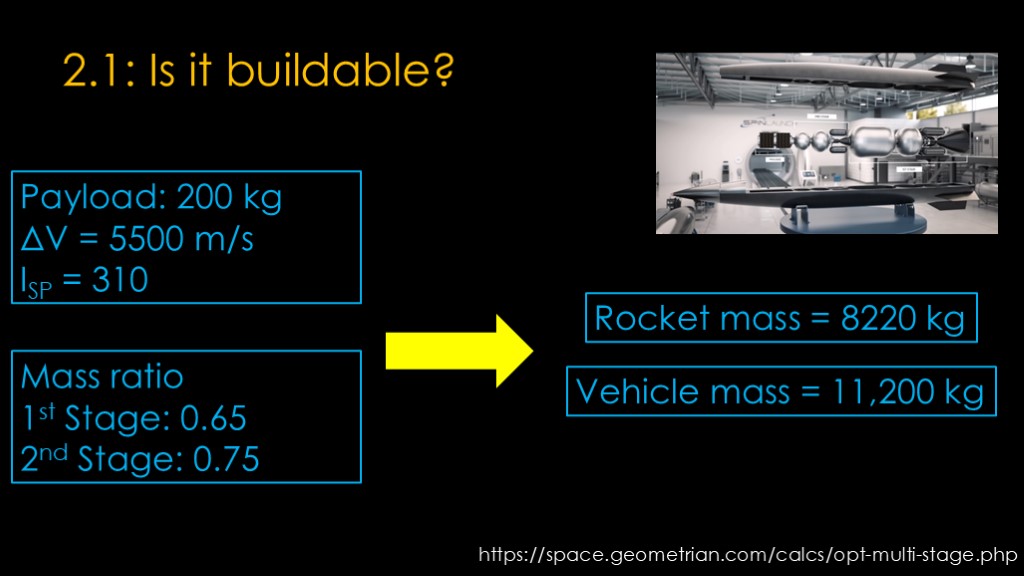
We can now play around with some numbers...
Assuming the following:
A payload of 200 kilograms
A required delta v of 5500 meters per second
Engines with an ISP of 310.
Now we need to estimate how much of each stage's mass is propellant and much is payload and structure.
I pulled some numbers from existing rockets
Electron is about 0.7 for the first stage and 0.8 for the second stage. Falcon 9 is about 0.63 for the first stage and 0.86 for the second stage. Based on those numbers I decided to specify a mass ratio of 0.65 for the first stage and 0.75 for the second stage.
Run that through a calculator based on the rocket equation, and the total mass for the rocket is 8220 kg, or about 73% of the vehicle mass. Note that I can push this number around by changing the mass ratio estimates; push them up by 5% and the rocket loses about 3000 kg of mass.
Is this buildable?
The rocket part is low-tech and therefore likely fairly easy to develop, with the caveat that it needs to survive 10,000 Gs of acceleration and still function.
The fairing is a big question mark; it's pretty big and it needs to handle heating loads, big g loads, and protect everything inside of it very well.
I'm going to say "probably buildable", but it's a lot of new engineering which means a lot of testing, and doing it as a two-stage rocket just makes things worse.

Is the SpinLaunch organization capable of building this?
Organizational expertise is really, really important. Organizations that overreach - they try things that are much too hard for their level of experience - are rarely successful. Hubris and delusions are grandeur kill many companies.
They did, however, do this.
I'll put the full test video link up in the corner.
A subscale test - and the fact that they built a subscale tester - is a good thing. The fact that there has been no news in the 3 months of future tests at higher velocity is less good.
I am disappointed by the amount of effort put into video advocacy, and would like to see videos that focus on the details rather than being sales presentations.
So... they rate a "maybe" in answer to this question, but that's honestly about all we could expect because nobody has tried this before.

What are the failure modes?
We understand rocket failure modes pretty well, and we know how to mitigate for them - how to keep the public and the workers safe.
But spinlaunch is a different approach with different issues.
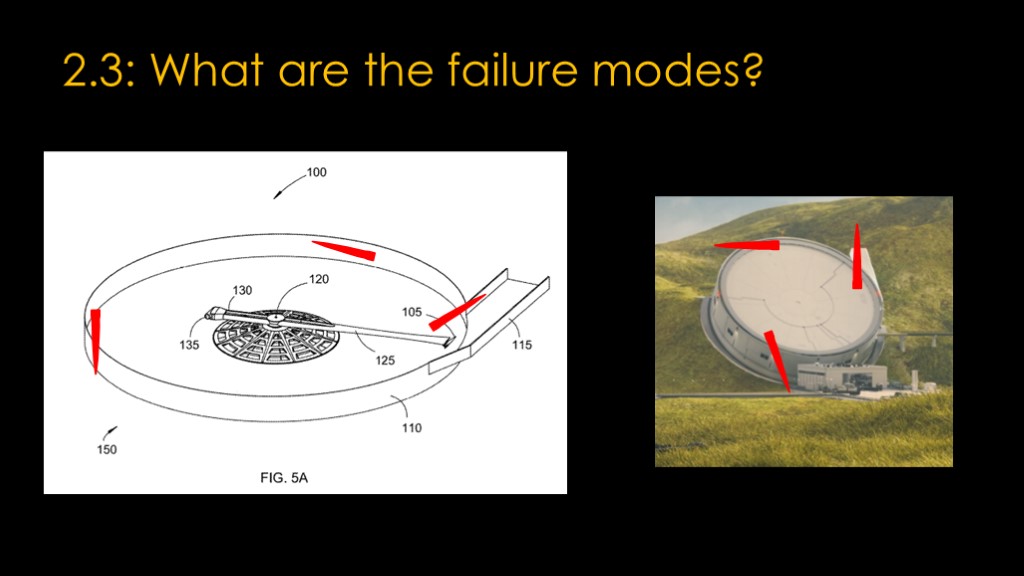
The obvious failure mode is something happening before the vehicle exits the chamber.
My first thought is that the vehicle could miss the exit aperture and impact the chamber itself. Or perhaps the clamps fail and the vehicle comes loose when it is pointing towards the ground. Or it fails and comes out of the vacuum chamber going roughly sideways.
The amount of damage it will cause will depend on the energy of the impact. But before we calculate that, I thought it might be interesting to have a benchmark
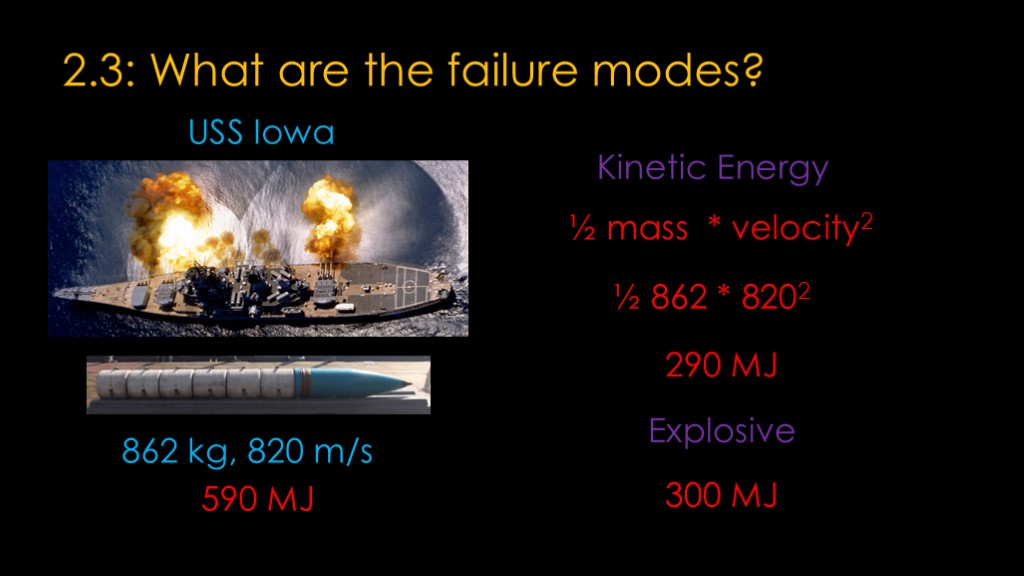
The USS Iowa was a world war II battleship which fired a very large shell, seen here with 6 propellant bags.
The shell massed 862 kilograms and left the gun at 820 meters per second.
We know that kinetic energy is equal to one half the mass times the velocity squared, and if we do the math we find that the kinetic energy of the shell is 290 mega joules.
In addition, there's 70 kg explosive charge that adds 300 MJ, for a total of 590 MJ of energy.
http://www.navweaps.com/Weapons/WNUS_16-50_mk7.php
https://en.wikipedia.org/wiki/Dunnite
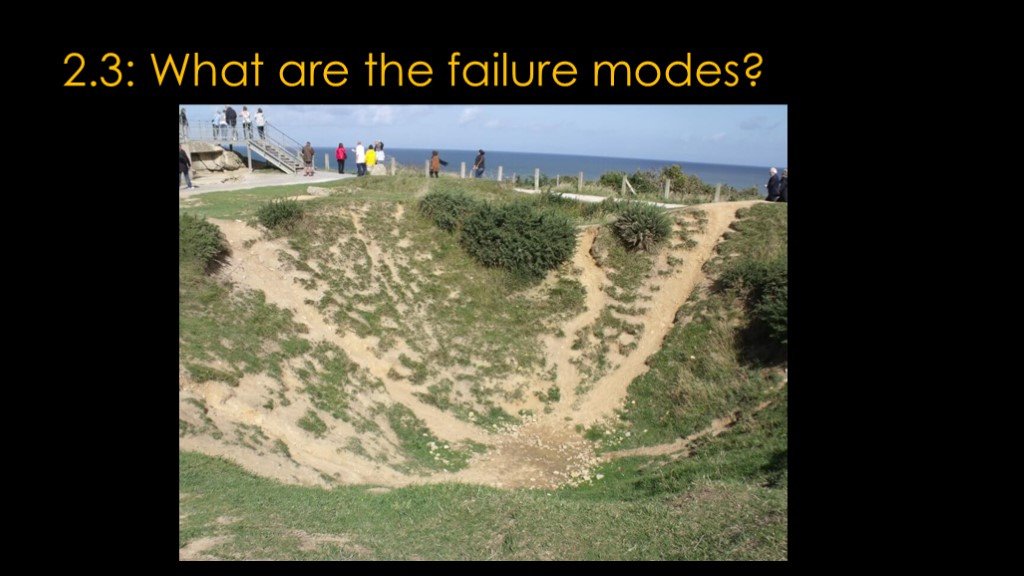
That amount of energy is enough to make a crater like this, about 15 meters wide and 6 meters deep.
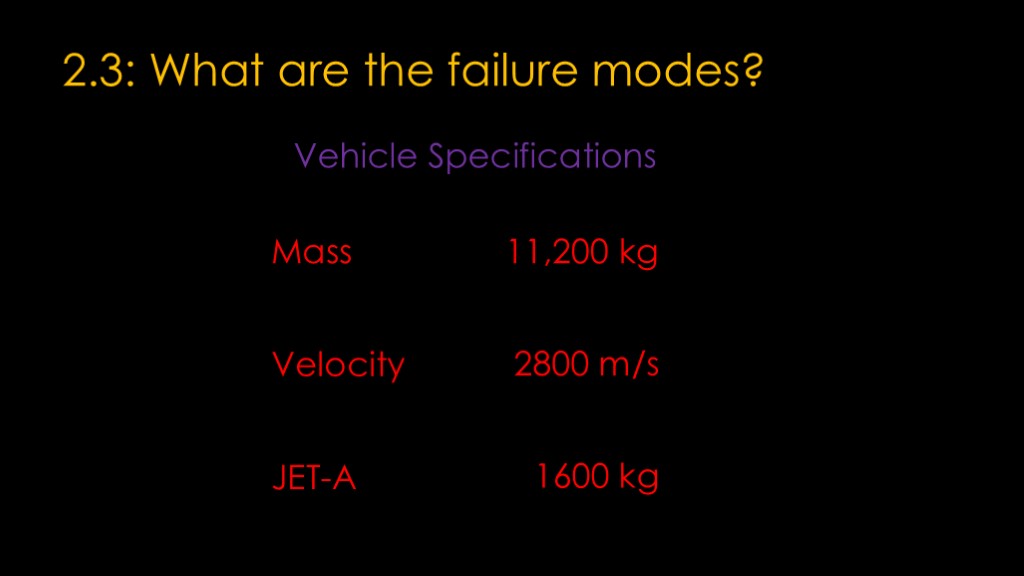
Now that we have some context, how does that compare to SpinLaunch?
Their video gives a launch vehicle mass of 11,200 kilograms and other materials specify a velocity of 2800 meters per second at launch. In addition, the rocket contains 1600 kg of Jet-A fuel plus enough liquid oxygen to combust it quickly.

We can now compare the battleship shell's energy to the spin launch energy.
The spin launch vehicle has a mass of 11,200 kilograms and is going 2800 meters per second at release. Plug those values into the equation, and we get 43,900 MJ of kinetic energy, and we also get another 32,000 megajoules from burning the JET-A if we burn half of it.
That gives us around 75,900 megajoules.
Or 129 times the energy in one of those battleship shells.
This is actually a fairly small amount of energy compared to other launchers; the Falcon 9 first stage has 5.1 million megajoules of energy in the RP-1 it carries, or about 67 times the energy of the SpinLaunch vehicle. Rocketry is inherently a high energy business.

If the vehicle misses the exit port, there simply isn't enough mass in the chamber walls to do more than slow the vehicle down a small amount. The chamber will be damaged and remember that there is a lot of kinetic energy in the spinner arm and drive mechanism and it could do more damage as it slows down.
If the vehicle impacts on the ground side and runs into the earth, all of that energy is going to be liberated over a very small area. It seems unlikely that any of the facility would survive.
If the vehicle comes out to the side and stays somewhat intact, it could go a long way - naval guns have ranges of 40 km and the launcher is travelling much, much faster. If it breaks up the distance would be shorter but anything inline with the possible exit vector could be at risk. Maybe you could mitigate some risk by a very strong wall around the outside of the vacuum chamber.
Traditional rockets include destruct systems to deal with rogue vehicle scenarios, but with a vehicle travelling 2.8 kilometers in a second and likely already coming apart, it's not clear that they would help here.
It will be very interesting to read the safety analysis for the full-sized version.
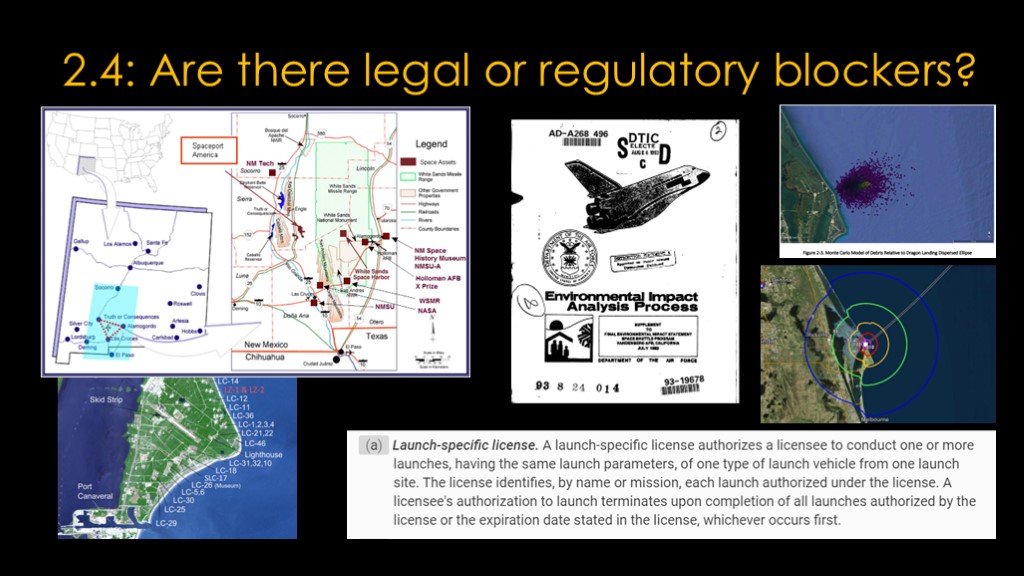
The next question is whether there are any legal or regulatory blockers.
I don't think the FAA is likely to let them launch the full version out of their current location in New Mexico because of the normal restrictions on overflight, so that means someplace on the east coast. There are options at cape Canaveral but few options elsewhere.
They might need to do an environmental impact because their technology is different than what is already in use.
And they will have to do enough analysis to get a launch license, and that's going to be slow because it's a different technology.

Is it practical?
Probably. Given a reasonable amount of money - say, a billion or so - you can likely get there.

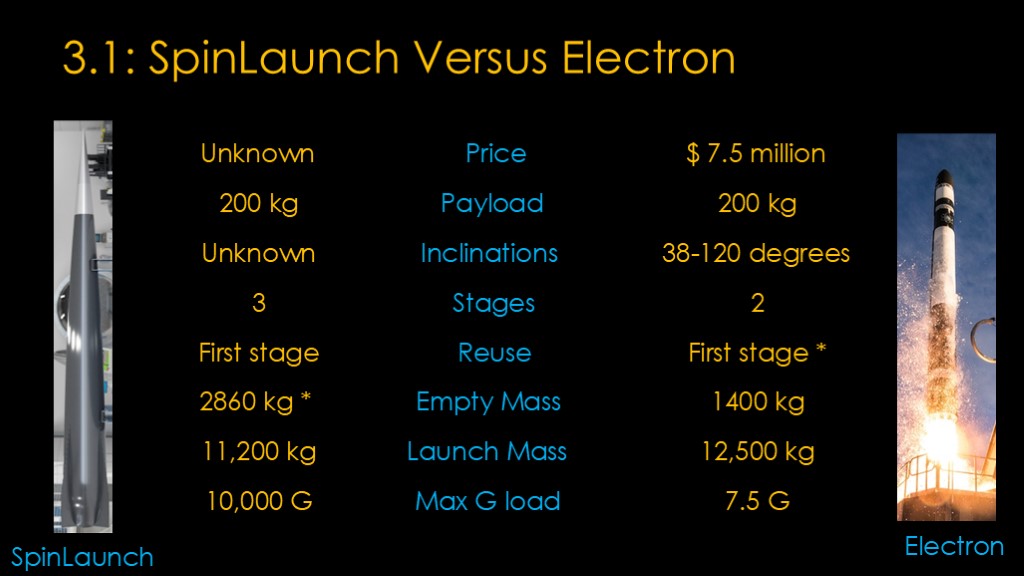
One way to understand viability is to compare a new entrant against a competitor. The obvious comparison is RocketLab's Electron.
We'll start with price: The electron price is about $7.5 million per launch. We don't know what spinlaunch is aiming for, but it needs to be cheaper than that.
Both are designed as 200kg launchers.
Electron can target a wide variety of different inclinations just by changing the direction of the trajectory. We don't know what spinlaunch can do; they could conceivably build their vacuum chamber on a large turntable to point in different directions, though that hasn't shown up in any of their materials. If not, they will be limited to the orbits they can get to starting with the base launch, and that will limit orbit choice and reduce payload.
Electron is a 2 stage rocket and SpinLaunch is a 3 stage rocket if you count the spinner as the first stage.
Electron is close to recovering their first stage and reusing it, and spinlaunch would obviously reuse the spinner
Electron is a very light vehicle, massing only 1400 kg without propellants, compared to my estimate of 2860 kg for the unfueled Spinlaunch rocket.
Their launch mass is surprisingly close; 12,500 kg for electron and 11,200 kg for Spin launch.
Finally, the maximum G load for payloads is 7.5 G for electron, and 10,000 G for spin launch.
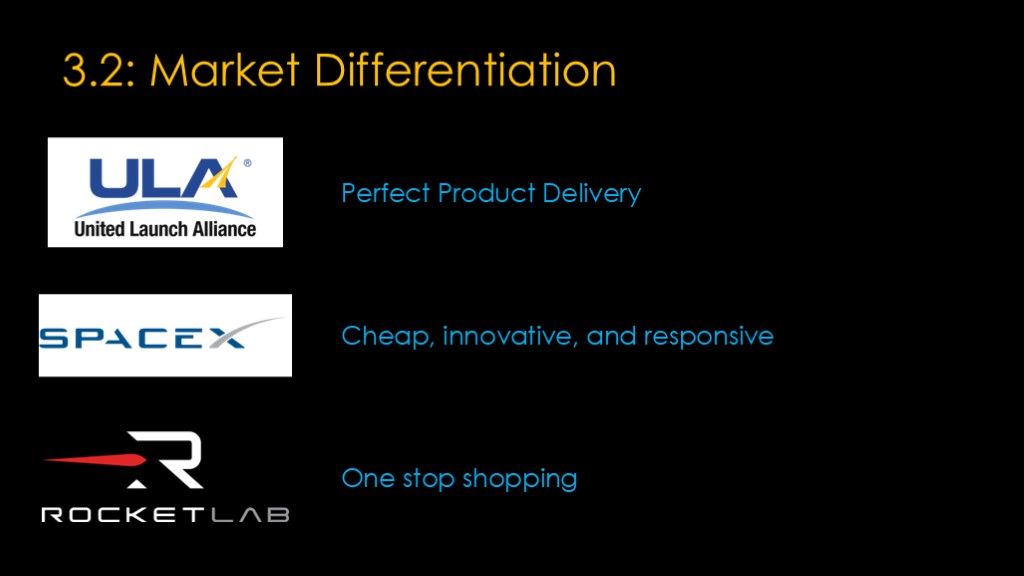
I'd like to talk a bit about how launch companies differentiate themselves.
ULA's claim to fame is extremely high reliability. They know they aren't the cheapest, but for the US government customer they target, reliability is more important.
SpaceX's claim is to be cheap, innovative, and responsive. They will give you a price that is better than anybody else and they will be able to launch your payload faster than their competitors.
Rocket lab's claim is partly to be like SpaceX, but they have recently moved towards being a one-stop shop; they will handle everything that you need to get your payload in space and functioning.
That differentiation is what allows these companies to be successful; they know what their strengths are and what market they are aiming for.
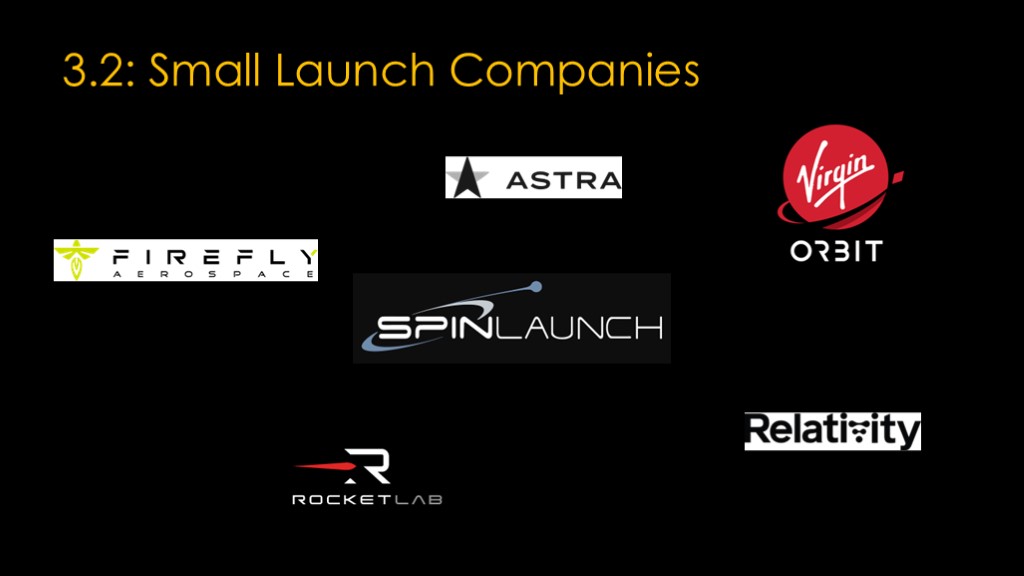
There are a lot of small launch companies out there.
Rocket lab and virgin orbit are up and running. Firefly, astra, and relativity are in development or flying.
Where does SpinLaunch fit into this very competitive marketplace? How can they differentiate?
The short answer is that I don't see much to differentiate them, and this launch market is already very crowded.

Is SpinLaunch an attractive investment?
They are at the small end of smallset, and that limits their market
There are significant technical challenges in building the spinner, the fairing, and the rocket.
They require high-g satellites. I see very little reason for satellite makers to want to do this; it's work that only makes sense for spin launch as a provider. It might make sense for large numbers of satellites, but those customers can be served by larger launchers who can carry more at once.
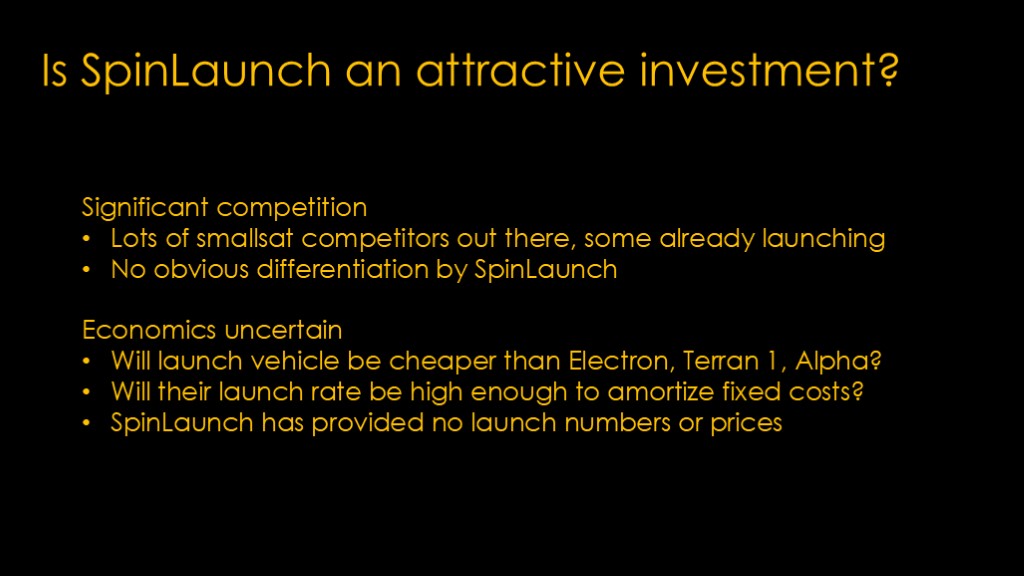
There is already significant competition in this market, with some competitors already launching payloads, and no obvious attribute that makes spinlaunch different. Why would a customer choose them over one of the other companies?
Finally, the economics are uncertain. It's not clear that their launch vehicle will be cheaper than the other entrants, nor is it clear that they can launch enough to amortize their fixed costs. I was unable to find any information on their price targets.

Is SpinLaunch an attractive investment?
Not really; I don't see any reason to expect their approach to be more successful than the other approaches and they are late to the market.
I think people have focused on the uniqueness of the approach rather than looking at the benefits.